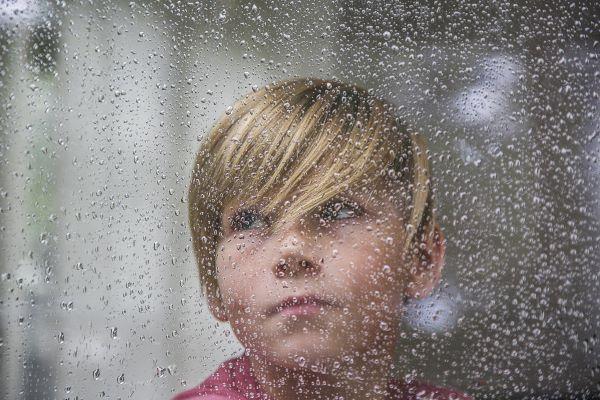On this page you will find the following topics:
- Actors in the child’s everyday life
- Child welfare services
- Forensic psychiatry and psychology unit for children and adolescents
- The role of the police in protecting the child
Protecting the child in connection with violence against children refers primarily to taking care of the child’s safety. Safety can be divided both to physical safety and to psychological safety. From the point of view of the child’s well-being, it is significant that both of these are realised.
In cases of suspected violence against a child, many different actors at the different levels of the service system and in different administrative branches are often involved in dealing with the child’s matters. The suspicion of a possible experience of violence often arises in the child’s everyday development environment, such as in early childhood education and care or at school. The processing of the suspicion is then transferred to the police and child welfare services.
After this, the police may also request executive assistance from the forensic psychiatry and psychology unit for children and adolescents (Barnahus Centre). The duty to take care of the child’s safety at every stage of the investigation applies to all the different actors involved.

- Räty, Tapio 2015: Lastensuojelulaki. Käytäntö ja soveltaminen [The Child Welfare Act. Practice and application]. 3rd edition. Porvoo: Edita.
Actors in the child’s everyday life
Professionals in the child’s everyday development environments protect the child
Children and young people spend most of their everyday life in early childhood education and care or at school and are familiar to many professionals in that environment. In combatting violence against children, the work input of these professionals is essential:
- in the prevention of violence (e.g., safety skills education)
- in the identification of violence.
For example, the suspicion of violence experienced by the child within the family often arises at school or in the day-care centre. Children talk about the difficult things they have experienced to the adults they find they can trust, and it is important for the adult to know what action to take with the information they have been trusted with.
Read in the Handbook for Child Protection (in Finnish) how to act when a suspicion of violence arises.
Read on THL’s webpage on violence (in Finnish) how to encounter and provide initial support to a child who has experienced violence.
Taking action without delay
When a suspicion has arisen, it is important to safeguard the child by reacting straight away, as the child’s situation may require immediate protection measures. The elapsing time also affects how well the child can explain things that have possibly happened to the child, which may complicate the assessment of the need for protection especially in the case of young children. Taking action without delay may require submitting a child welfare notification by phone to emergency child welfare or emergency social services. The Child Welfare Act (section 25) also obliges to act without delay. Also check when you should contact the police.
When submitting a child welfare notification, the employee in basic public services transfers the responsibility for the child’s safety to a party that can take action to protect the child, if necessary. Consultation is important in unclear cases, when it is uncertain what action should be taken and who should be contacted. In situations where it is suspected that violence has been targeted at the child, the consultation can be done by calling the child welfare emergency number or the police.
Informing the guardians of suspected violence against the child may put the child in an unsafe situation
When it is suspected that a family member has targeted violence at the child, informing the guardians is discussed with child welfare services and the police. They will assess when and by whom the guardians should be contacted with regard to the notifications concerning the child. Exposing the suspicion of violence may be a challenging moment in the family and the child should not have to experience more stress, worry or even fear because matters have been discovered. The guardians may also unintentionally or deliberately influence what the child says about the suspected violent situation if they bring it up with the child. It may therefore be significant in terms of investigating the possible offence that the suspected offender has not talked about the exposure of the suspected violence with the child before the authorities.
Rules to remember when suspecting violence against a child:
- Ask the child only what is necessary
- Do not pose leading questions to the child
- Record what the child says word by word
- Immediate contact: child welfare services and the police (check when to contact the police)
- Child welfare services/the police will inform the guardians.
Remember the possibility to consult!
Child welfare services
Duty of child welfare services to protect the child
When violence against a child is suspected, the task of social work in child welfare is to investigate the child’s need for protection (Child Welfare Act, section 26) and the task of the police is to investigate the offence that may have been committed. At the investigation stage, the interest of the child is realised best when the authorities proceed on the basis of a shared plan. The social welfare authorities are responsible for ensuring the safety of the child, which especially in suspected violence within the family requires meeting the child and investigating the child’s experiences and views in a manner appropriate for the child’s age.
In assessing the child’s need for protection, the following must be paid attention to when violence is suspected:
- Matters related to the suspected violence are discussed with the child only to the extent it is necessary for investigating the need for protection so that no harm will be caused to the police investigation.
- In addition to the protection, the child also has the right to have the matter dealt with well in terms of criminal justice.
When the child is interviewed without asking leading questions, by posing open-ended questions:
- The interviewer’s own assumptions and views do not affect what the child says and the child’s recollection of what has happened.
- The information obtained from the child is more reliable than when the interview has been conducted with leading questions.
The reliability of the information obtained in the interview is significant for assessing the need for protection as the decision on the need for protection may in some situations be largely based on what the child has said.
For the child’s safety, it is essential to take into account the overlapping of different forms of violence. For example, in addition to physical violence, the child may be exposed to violence between the parents.
In suspected cases of violence against children, the relationship of the police and the forensic psychology and psychiatry unit for children and adolescents with the client is often characterised by its shortness. If the child’s circumstances appear to be unsafe, it is the task of social work in child welfare services to stay alongside the child for a longer period of time and to ensure the safety of the conditions and the end of all forms of violence. In the context of social work in child welfare services, safety should be assessed continuously.

Take into account the different forms of violence
Taking into account the overlapping of different forms of violence is essential for the safety of the child, for example, in addition to physical violence, possible exposure to violence between parents.
Forensic psychiatry and psychology unit for children and adolescents
The unit investigates suspected assault and sexual offences against a child or a young person. The examinations are part of the pre-trial investigation and are based on a request for executive assistance made by the police. There are five units in Finland and they operate in specialised medical care. During the examination period, the child or young person is interviewed and the adult taking care of the child is met, if necessary.
Key activities related to protecting the child in the work carried out by the units include:
- Exchange of information essential for the investigation and protecting the child between the authorities
- Interagency cooperation in assessing the overall situation of the child and the family.
The unit conducts the examinations in cooperation with the police. In some situations, it is in the best interest of the child that the social worker assessing the child’s need for protection also attends and follows the interview. The appropriateness of the operating practices is assessed in cooperation with the police.
Background information on the child is collected from social welfare and health care for the assessment of the child’s overall situation during the period of examination. The units have a duty to submit a child welfare notification if new concerns arise on the child’s overall situation during the period of examination.
Interviews with children are usually conducted in the premises of the unit, and sometimes in the day-care centre or at school, if this is considered to be in the best interest of the child. From the point of view of the child’s safety, interviewing the child may involve risk factors especially in a case of suspected violence within the family. In connection with the interview, it is important to inform the authority responsible for protecting the child of the possible concerns about the child’s safety.
The units have special expertise in issues related to violence against children or young people. The authorities responsible for protecting the child may receive help from the unit for considering the case and recommendations in matters related to mistreatment.

- Read more about child welfare notification Handbook for Child Protection (in Finnish).
The role of the police in protecting the child
The police are a key cooperation party in child welfare, and exchange of information between the police and child welfare services is important for the protection of the child. In cases of suspected violence against a child, the interest of the child is best realised when child welfare services and the police proceed in the investigation in close cooperation and on the basis of a shared plan.
The police can contribute to protecting the child by ensuring that child welfare actors receive the information on the child’s situation that is essential for assessing the need for protection. Access to information is enabled and disclosure of information is obliged by section 20 of the Act on the Status and Rights of Social Welfare Clients (Finlex, in Finnish).
Exposure of the child to violence between adults is one form of violence against the child. Protecting the child against it is therefore as important as protecting the child against other forms of violence. The police have a particularly important role in identifying this form of violence through house calls. Regardless of whether the child or young person is present, it is important to make a child welfare notification in connection with house calls related to violence if the parties have minors in their custody (Child Welfare Act, section 25).
More information:

